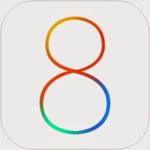 |
| iOS8 Framework |
Download
- Obtaining Information about the Downloadable Content
- Obtaining Information about the State of a Download
- Accessing a Completed Download
Payment
- Creating Instances
- Getting Attributes
Mutable Payment
- Getting and Setting Attributes
Payment Queue
- Determining Whether the User Can Make Payments
- Getting the Queue
- Adding and Removing the Observer
- Managing Transactions
- Restoring Purchases
- Downloading Content
Payment Transaction
- Getting Information About the Transaction
- Getting Information about the Transaction’s Downloadable Content
- Restored Transactions
Product
- Getting Product Attributes
- Getting Downloadable Content Information
Products Response
Request
- Controlling the Request
- Accessing the Delegate
Products Request
- Initializing a Products Request
- Setting the Delegate
Receipt Refresh Request
- Working with Receipt Refresh Requests
Store Product View Controller (Responder)
- Setting a Delegate
- Loading a New Product Screen
Payment Transaction Observer (Protocol)
- Handling Transactions
- Handling Restored Transactions
- Handling Download Actions
Products Request Delegate (Protocol)
Request Delegate (Protocol)
- Completing Requests
- Handling Errors
Store Product View Controller Delegate (Protocol)
- Responding to a Dismiss Action



